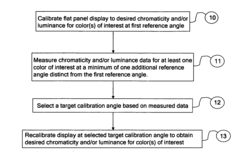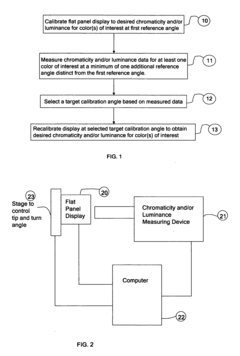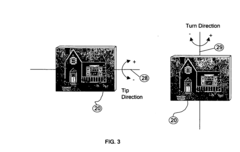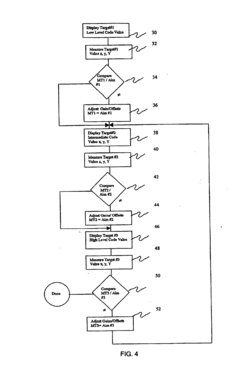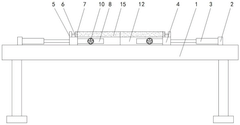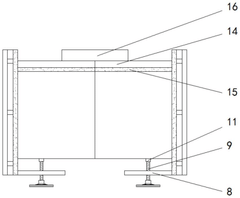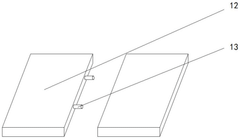Advanced QLED Displays: Performance and Calibration Tips
QLED Display Evolution and Objectives
Quantum Dot Light-Emitting Diode (QLED) display technology has emerged as a significant advancement in the field of visual display systems. The evolution of QLED displays can be traced back to the early 2010s when researchers began exploring the potential of quantum dots in enhancing display performance. Since then, QLED technology has undergone rapid development, driven by the increasing demand for higher quality, more energy-efficient displays across various applications.
The primary objective of QLED display technology is to overcome the limitations of traditional LED and OLED displays while offering superior color reproduction, brightness, and energy efficiency. QLED displays aim to provide a wider color gamut, higher peak brightness, and improved color volume compared to conventional display technologies. This is achieved through the unique properties of quantum dots, which can emit light at specific wavelengths when excited by an energy source.
As the technology has progressed, several key milestones have been reached in QLED display development. These include the commercialization of QLED TVs, improvements in quantum dot efficiency and stability, and the integration of QLED technology into various display form factors, such as monitors and mobile devices. The ongoing research and development in this field continue to push the boundaries of what is possible in terms of display performance and visual quality.
One of the critical trends in QLED display evolution is the pursuit of enhanced color accuracy and expanded color gamut. Manufacturers are constantly working to improve the precision of quantum dot emission spectra, allowing for more accurate representation of colors across the entire visible spectrum. This has led to the development of displays capable of reproducing a significantly larger portion of the Rec. 2020 color space, which is considered the gold standard for ultra-high-definition content.
Another important aspect of QLED display evolution is the focus on improving energy efficiency and reducing power consumption. As displays become larger and higher in resolution, the need for more efficient light emission becomes paramount. QLED technology offers promising solutions in this regard, as quantum dots can potentially convert energy to light more efficiently than traditional phosphor-based systems.
The objectives for future QLED display development include further enhancements in color accuracy, brightness, and contrast ratios. Researchers and manufacturers are also exploring ways to improve the viewing angles of QLED displays, aiming to match or exceed the performance of OLED technology in this aspect. Additionally, there is a growing emphasis on developing more environmentally friendly quantum dot materials, moving away from heavy metals and towards more sustainable alternatives.
Market Demand for QLED Technology
The market demand for QLED (Quantum Dot Light Emitting Diode) technology has been experiencing significant growth in recent years, driven by the increasing consumer appetite for high-quality display solutions in various applications. QLED displays offer superior color accuracy, brightness, and energy efficiency compared to traditional LED and OLED technologies, making them particularly attractive for premium televisions, monitors, and mobile devices.
In the television segment, QLED technology has gained substantial traction, with major manufacturers like Samsung, TCL, and Hisense heavily investing in and promoting QLED-based products. The global QLED TV market size was valued at approximately $8.5 billion in 2020 and is projected to grow at a compound annual growth rate (CAGR) of over 20% from 2021 to 2028. This growth is fueled by the increasing demand for 4K and 8K resolution displays, as QLED technology excels in delivering vibrant colors and high contrast ratios necessary for these ultra-high-definition formats.
The gaming monitor market has also shown a strong inclination towards QLED technology. Gamers are increasingly seeking displays with high refresh rates, low input lag, and excellent color reproduction – all attributes that QLED monitors can deliver effectively. As a result, the gaming monitor segment is expected to be a significant driver of QLED demand in the coming years.
In the mobile device sector, QLED technology is gradually making inroads, particularly in high-end smartphones and tablets. The technology's ability to provide vivid colors and high brightness while maintaining energy efficiency makes it an attractive option for manufacturers looking to differentiate their premium products.
The automotive industry represents another emerging market for QLED displays. As vehicles become more technologically advanced and incorporate larger, more sophisticated infotainment systems, the demand for high-quality displays is rising. QLED technology's ability to maintain visibility in bright sunlight and its durability make it well-suited for automotive applications.
Commercial and professional markets, including digital signage, control rooms, and medical imaging, are also showing increased interest in QLED technology. The superior color accuracy and brightness of QLED displays make them ideal for applications requiring precise color reproduction and high visibility in various lighting conditions.
Despite the growing demand, challenges remain in the QLED market. The technology faces competition from OLED displays, which offer advantages in terms of contrast ratios and viewing angles. Additionally, the higher cost of QLED displays compared to traditional LED panels may limit adoption in price-sensitive market segments. However, ongoing research and development efforts are focused on addressing these limitations and further improving QLED performance, which is expected to drive continued market growth and expansion into new application areas.
QLED Technical Challenges
QLED (Quantum Dot Light Emitting Diode) displays have made significant strides in recent years, offering enhanced color accuracy, brightness, and energy efficiency compared to traditional LED displays. However, as with any advancing technology, QLED displays face several technical challenges that need to be addressed to further improve their performance and widespread adoption.
One of the primary challenges in QLED technology is the stability and longevity of quantum dots. These nanocrystals are prone to degradation when exposed to heat, moisture, and oxygen, which can lead to a decrease in display performance over time. Researchers are actively working on developing more robust quantum dot materials and encapsulation techniques to enhance their durability and extend the lifespan of QLED displays.
Another significant challenge lies in the blue light emission. While red and green quantum dots have achieved high efficiency and stability, blue quantum dots still lag behind in terms of performance. This imbalance affects the overall color gamut and accuracy of QLED displays. Improving the efficiency and stability of blue quantum dots remains a critical area of focus for researchers and manufacturers.
The manufacturing process of QLED displays also presents challenges, particularly in achieving uniform quantum dot deposition across large screen sizes. Ensuring consistent color reproduction and brightness across the entire display surface requires precise control over the quantum dot layer thickness and distribution. Advanced manufacturing techniques and quality control measures are being developed to address these uniformity issues.
Heat management is another crucial challenge in QLED displays. As these displays become brighter and more energy-efficient, managing the heat generated by the quantum dots and backlight becomes increasingly important. Excessive heat can lead to color shift, reduced lifespan, and decreased overall performance. Innovative cooling solutions and thermal management strategies are being explored to mitigate these issues.
Calibration of QLED displays poses its own set of challenges. The unique characteristics of quantum dots, including their temperature sensitivity and potential for slight variations between batches, require sophisticated calibration techniques. Developing accurate and efficient calibration methods that can account for these factors while maintaining color accuracy and consistency across different viewing conditions is an ongoing area of research and development.
Furthermore, the integration of QLED technology with other display innovations, such as flexible or transparent displays, presents additional technical hurdles. Combining the benefits of quantum dots with these form factors requires overcoming challenges related to material compatibility, manufacturing processes, and maintaining display performance under various environmental conditions.
Current QLED Display Solutions
01 Quantum dot enhancement for QLED displays
QLED displays utilize quantum dots to enhance color performance and efficiency. These nanoscale semiconductor particles are engineered to emit specific wavelengths of light when excited, resulting in improved color gamut, brightness, and energy efficiency compared to traditional LED displays.- Quantum dot enhancement for QLED displays: QLED displays utilize quantum dots to enhance color performance and efficiency. These nanoscale semiconductor particles are engineered to emit specific wavelengths of light when excited, resulting in improved color gamut and brightness. The integration of quantum dots in the display structure allows for more precise color control and higher luminance efficiency compared to traditional LED displays.
- Optimization of QLED device structure: Improving QLED display performance involves optimizing the device structure. This includes enhancing the electron transport layer, hole transport layer, and emissive layer configurations. Advanced materials and novel architectures are employed to improve charge carrier balance, reduce energy barriers, and increase quantum efficiency. These structural optimizations lead to better overall display performance, including improved brightness, contrast, and power efficiency.
- Color conversion and light management techniques: QLED display performance is enhanced through advanced color conversion and light management techniques. This involves the use of specialized color filters, light-scattering layers, and micro-lens arrays to improve color purity and viewing angles. Additionally, novel backlight designs and optical films are implemented to maximize light extraction and minimize losses, resulting in improved display brightness and energy efficiency.
- Thermal management and stability improvements: Enhancing the thermal stability and management of QLED displays is crucial for maintaining long-term performance. This involves developing heat-dissipation structures, implementing temperature-resistant materials, and optimizing the overall thermal design of the display. Improved thermal management leads to better color stability, longer lifespan, and more consistent performance across varying operating conditions.
- Driving and control circuitry advancements: Advancements in driving and control circuitry contribute significantly to QLED display performance. This includes developing sophisticated thin-film transistor (TFT) backplanes, implementing advanced compensation algorithms, and optimizing pixel circuits. These improvements result in better uniformity, reduced image retention, and enhanced overall picture quality. Additionally, novel driving schemes are employed to improve refresh rates and reduce power consumption.
02 Optimization of QLED display structure
Improvements in QLED display performance are achieved through optimizing the layered structure of the display. This includes refining the electron transport layer, hole transport layer, and quantum dot emissive layer to enhance charge carrier mobility, reduce energy barriers, and improve overall quantum efficiency.Expand Specific Solutions03 Advanced materials for QLED displays
The development of new materials for QLED displays focuses on improving stability, longevity, and performance. This includes research into novel quantum dot compositions, encapsulation materials to protect against environmental degradation, and conductive polymers for enhanced charge transport.Expand Specific Solutions04 QLED manufacturing process improvements
Advancements in manufacturing processes contribute to enhanced QLED display performance. This includes refined deposition techniques for quantum dot layers, improved patterning methods for pixel formation, and optimized encapsulation processes to increase device longevity and reduce defects.Expand Specific Solutions05 Integration of QLED technology with other display innovations
QLED display performance is further enhanced by integrating it with other display technologies and innovations. This includes combining QLED with micro-LED for improved contrast and power efficiency, incorporating advanced backlight systems, and developing hybrid display architectures that leverage the strengths of multiple technologies.Expand Specific Solutions
Key QLED Industry Players
The advanced QLED display market is in a growth phase, with increasing demand for high-performance displays in various sectors. The market size is expanding rapidly, driven by technological advancements and consumer preferences for superior image quality. In terms of technological maturity, QLED displays are evolving quickly, with major players like Samsung Display Co., Ltd., BOE Technology Group Co., Ltd., and TCL China Star Optoelectronics Technology Co., Ltd. leading the innovation. These companies are investing heavily in research and development to improve QLED performance, color accuracy, and energy efficiency. Other significant contributors include Apple, Inc. and Sharp Corp., who are also pushing the boundaries of QLED technology, particularly in areas of calibration and image processing.
BOE Technology Group Co., Ltd.
Samsung Display Co., Ltd.
QLED Core Innovations
- A method for calibrating flat panel displays by establishing desired chromaticity and luminance at a reference angle, measuring data at additional angles, and selecting a target calibration angle to optimize performance across a range of viewing angles, thereby reducing color and luminance variations.
- A processing positioning structure including a processing table, a support plate, an electric telescopic rod, a positioning plate and a clamping rubber plate is designed. The QLED display is clamped and limited through a movable connected placing table and a limiting rubber plate. Friction fixes the display to avoid deformation caused by thrust.
QLED Calibration Techniques
QLED calibration techniques are essential for optimizing the performance of advanced QLED displays. These techniques involve adjusting various parameters to achieve accurate color reproduction, optimal brightness, and improved overall image quality.
One of the primary calibration techniques for QLED displays is color calibration. This process involves adjusting the display's color temperature, gamma, and color space to match industry standards or user preferences. Color calibration typically requires specialized equipment, such as colorimeters or spectrophotometers, to measure and analyze the display's output accurately.
Brightness and contrast calibration are also crucial aspects of QLED display optimization. This involves adjusting the display's backlight intensity and contrast ratio to achieve optimal visibility across various lighting conditions. Advanced QLED displays often feature local dimming technology, which requires careful calibration to maintain deep blacks and high contrast without introducing artifacts.
Another important calibration technique is white balance adjustment. This process ensures that the display produces a neutral white point across different brightness levels. Proper white balance calibration helps eliminate color casts and improves overall color accuracy.
HDR calibration is becoming increasingly important for QLED displays, as many models support high dynamic range content. This technique involves optimizing the display's peak brightness, black levels, and color volume to accurately reproduce HDR content. Calibrators must carefully adjust tone mapping and color management settings to preserve detail in both highlights and shadows.
Motion handling calibration is another critical aspect of QLED display optimization. This involves adjusting motion interpolation settings and reducing motion blur to improve the clarity of moving images. Calibrators must strike a balance between smooth motion and preserving the original content's intended look.
Advanced QLED displays often feature AI-enhanced calibration algorithms that can automatically adjust display parameters based on ambient lighting conditions and content type. Calibrators must understand how to fine-tune these AI systems to achieve optimal results while maintaining consistency across different viewing scenarios.
Lastly, uniformity calibration is essential for ensuring consistent image quality across the entire QLED panel. This technique involves measuring and adjusting brightness and color uniformity to minimize variations that can be noticeable in large-screen displays.
QLED Environmental Impact
The environmental impact of QLED (Quantum Dot Light Emitting Diode) displays is an important consideration in the broader context of advanced display technologies. QLED displays offer significant improvements in energy efficiency compared to traditional LED and LCD displays, potentially reducing overall power consumption in consumer electronics.
One of the key environmental benefits of QLED technology is its longevity. These displays typically have a longer lifespan than their counterparts, which can lead to reduced electronic waste over time. The extended durability of QLED panels means fewer replacements are needed, potentially decreasing the environmental burden associated with manufacturing and disposal of display devices.
However, the production of quantum dots, the core component of QLED displays, raises some environmental concerns. The synthesis of quantum dots often involves the use of heavy metals and toxic chemicals, which require careful handling and disposal. Manufacturers are increasingly focusing on developing more environmentally friendly quantum dot materials, such as cadmium-free alternatives, to mitigate these issues.
The manufacturing process of QLED displays also has environmental implications. While it generally requires less energy than the production of OLED displays, it still involves complex procedures and resource-intensive steps. Efforts are being made to optimize these processes and reduce their environmental footprint through improved manufacturing techniques and the use of more sustainable materials.
End-of-life considerations for QLED displays are another crucial aspect of their environmental impact. The presence of quantum dots and other specialized materials can complicate recycling processes. Industry stakeholders are working on developing more effective recycling methods to recover valuable materials from QLED displays and minimize waste.
In terms of energy consumption during use, QLED displays generally offer better efficiency than traditional LCD displays, particularly in bright environments. This can translate to lower electricity usage over the lifetime of the device, potentially reducing the carbon footprint associated with powering these displays.
As the technology continues to evolve, researchers and manufacturers are exploring ways to further enhance the environmental profile of QLED displays. This includes developing more eco-friendly quantum dot materials, improving manufacturing processes, and designing for easier recycling and material recovery at the end of the product lifecycle.
